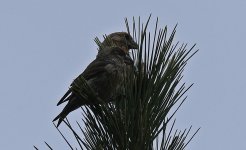Gastronaut
_______________
What's the current consensus on Scottish Crossbill? Does it exist? Did it ever exist? Were they just parrot crossbills all along? I remember these points were being debated some years ago but not whether everyone reached agreement.
I've tried checking the official British list online, it appears to still be there in cat A, but why do they have to make it so hard to check? Maybe I just followed the wrong links, to links, to links ...... only to end up at a hideous page that breaks and scrolls all over the place. Is there still a published list anywhere that is simply a list of names?
I've tried checking the official British list online, it appears to still be there in cat A, but why do they have to make it so hard to check? Maybe I just followed the wrong links, to links, to links ...... only to end up at a hideous page that breaks and scrolls all over the place. Is there still a published list anywhere that is simply a list of names?










